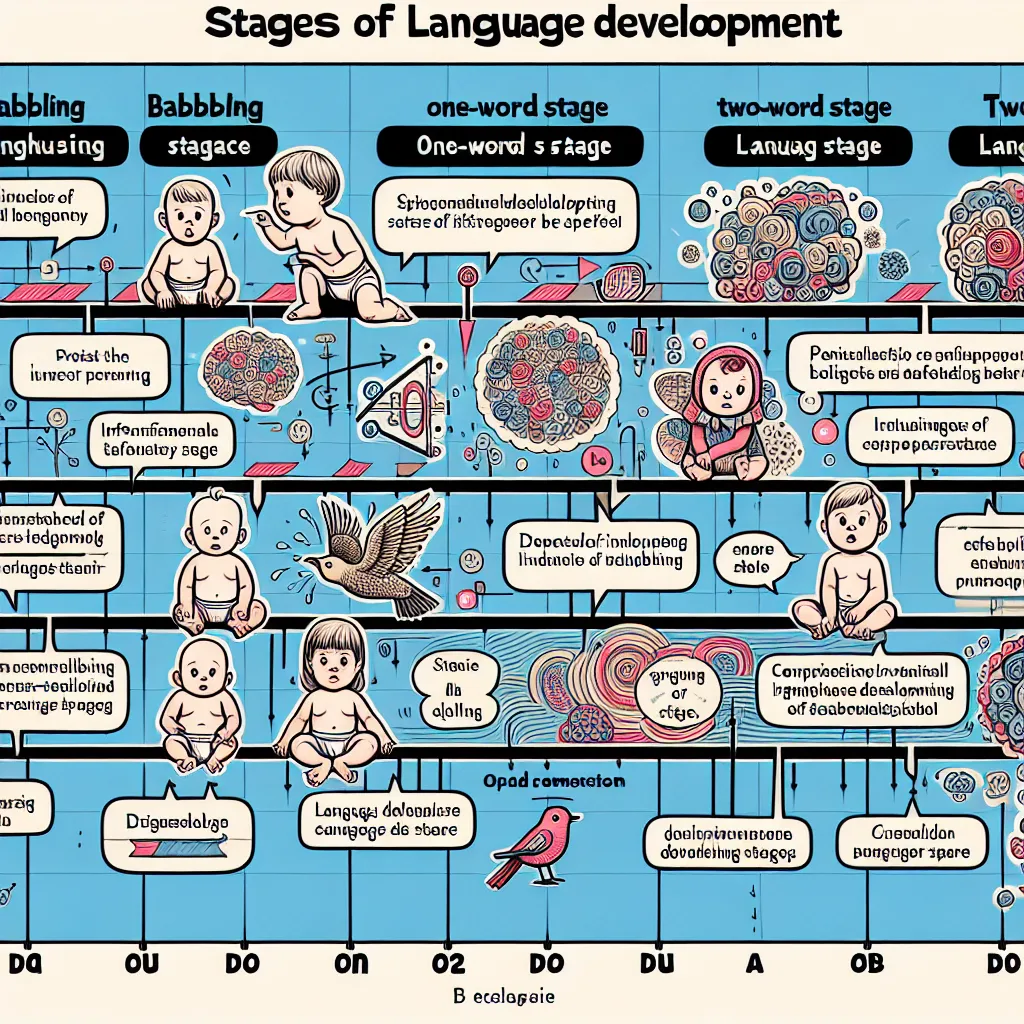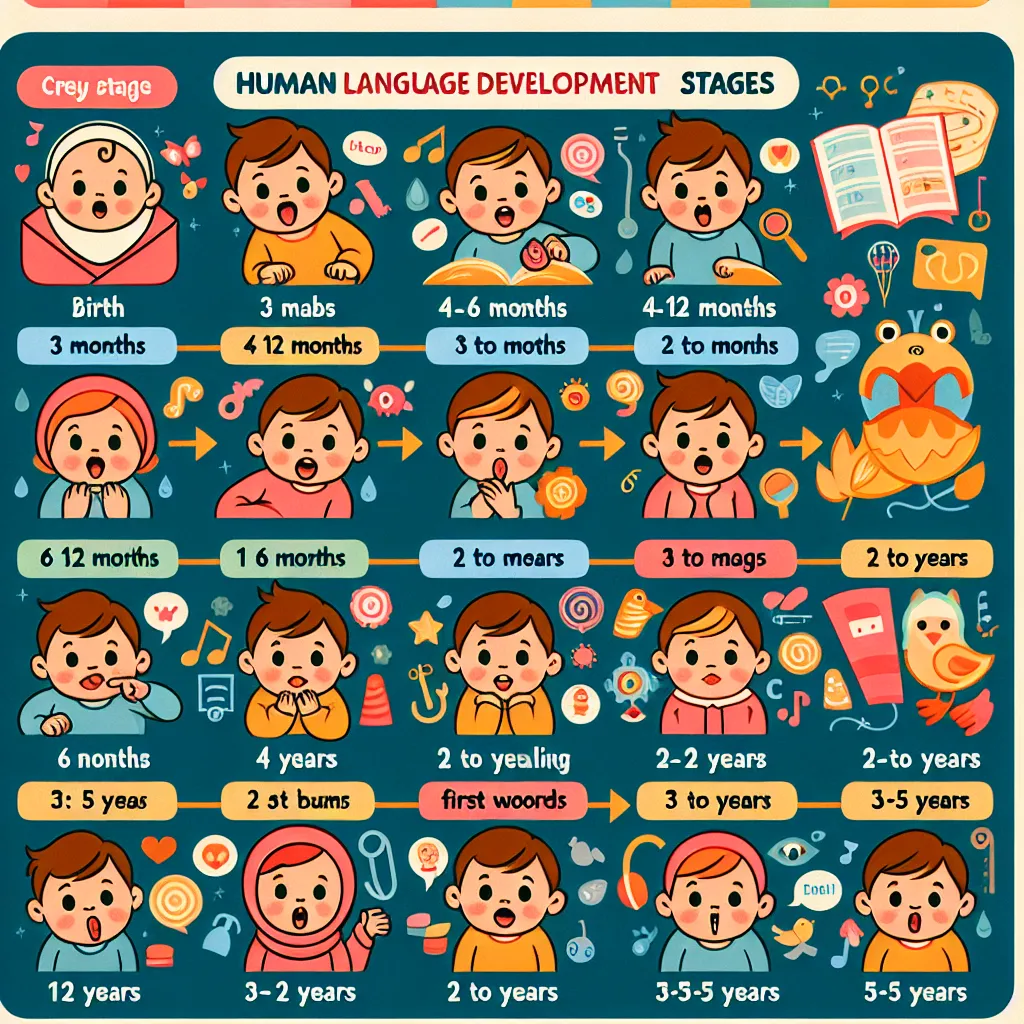Ask AI on The Internet
Question: List then define the pre-linguistic and the adult-like language stages in language development. (4)
1. Pre-linguistic stage: This stage of language development happens before children use words and phrases to communicate verbally. It typically begins at birth and lasts until about one year. There are several aspects of the pre-linguistic stage: a. Crying: Right from the time of birth, infants use crying to communicate, showing hunger, pain, or discomfort. b. Cooing: Around the age of 2 months, infants start making cooing sounds, which involve vowels, like "ooh" or "aah". c. Babbling: At about 4-6 months of age, babies begin to babble, producing sounds that include consonants. d. Gesturing: This includes pointing or waving, often taking place at about 8-12 months of age, helping children communicate before they can articulate words or phrases. 2. Adult-like language stage: This stage typically starts around the child's second year and develops further with age. Here are some elements involved in this stage: a. Two-word stage: From around 18-24 months, children start forming two-word sentences, like "want milk" or "go outside". This signals the beginning of syntactic structuring. b. Telegraphic speech: In this phase, children typically use three or more words in the exact order necessary to express thoughts, like "I want ball," or "Mommy give cookie". Prepositions and auxiliary verbs are usually missing at this stage, hence the term "telegraphic". c. Complex sentences: As children grow older, they start forming more complex sentences, using a wider range of vocabulary and sophisticated sentence structures seen in adult conversation. d. Mature language: Usually, by the age of 5, children have command over language rules and grammar and can use language in the same way adults do, conveying complex thoughts and ideas. They continue to learn new words and more complicated grammatical structures as they age and gain more experiences, improving their communication skills.
A new large language model has been made available since this question was asked.
To generate an updated answer from the new model, click the button below.
Think your answer is better than the AI's? Post it below.
Other Most Relevant Posts:
 Ask AI: List then define the pre-linguistic and the adult-like language stages in
language development.
Ask AI: List then define the pre-linguistic and the adult-like language stages in
language development.
 Ask AI: Describe the typical milestones and progressions observed in language
development during this period. (4)
Ask AI: Describe the typical milestones and progressions observed in language
development during this period. (4)
 Unraveling Language Development: From Pre-Linguistic to Adult-Like Stages and Beyond
1.2 Emergent Literacy: Building Blocks for Reading and Writing Proficiency
1.3 The Impact of Grade R: Nurturing L
Unraveling Language Development: From Pre-Linguistic to Adult-Like Stages and Beyond
1.2 Emergent Literacy: Building Blocks for Reading and Writing Proficiency
1.3 The Impact of Grade R: Nurturing L
 Unveiling the Language Journey: From Pre-Linguistic Stages to Addressing Language Difficulties in Classroom and Home Environments
1. Exploring Language Development: Pre-Linguistic and Adult-Like Lang
Unveiling the Language Journey: From Pre-Linguistic Stages to Addressing Language Difficulties in Classroom and Home Environments
1. Exploring Language Development: Pre-Linguistic and Adult-Like Lang
Question Tags
If you want your question answered by an AI, click here.



Post your own comment: